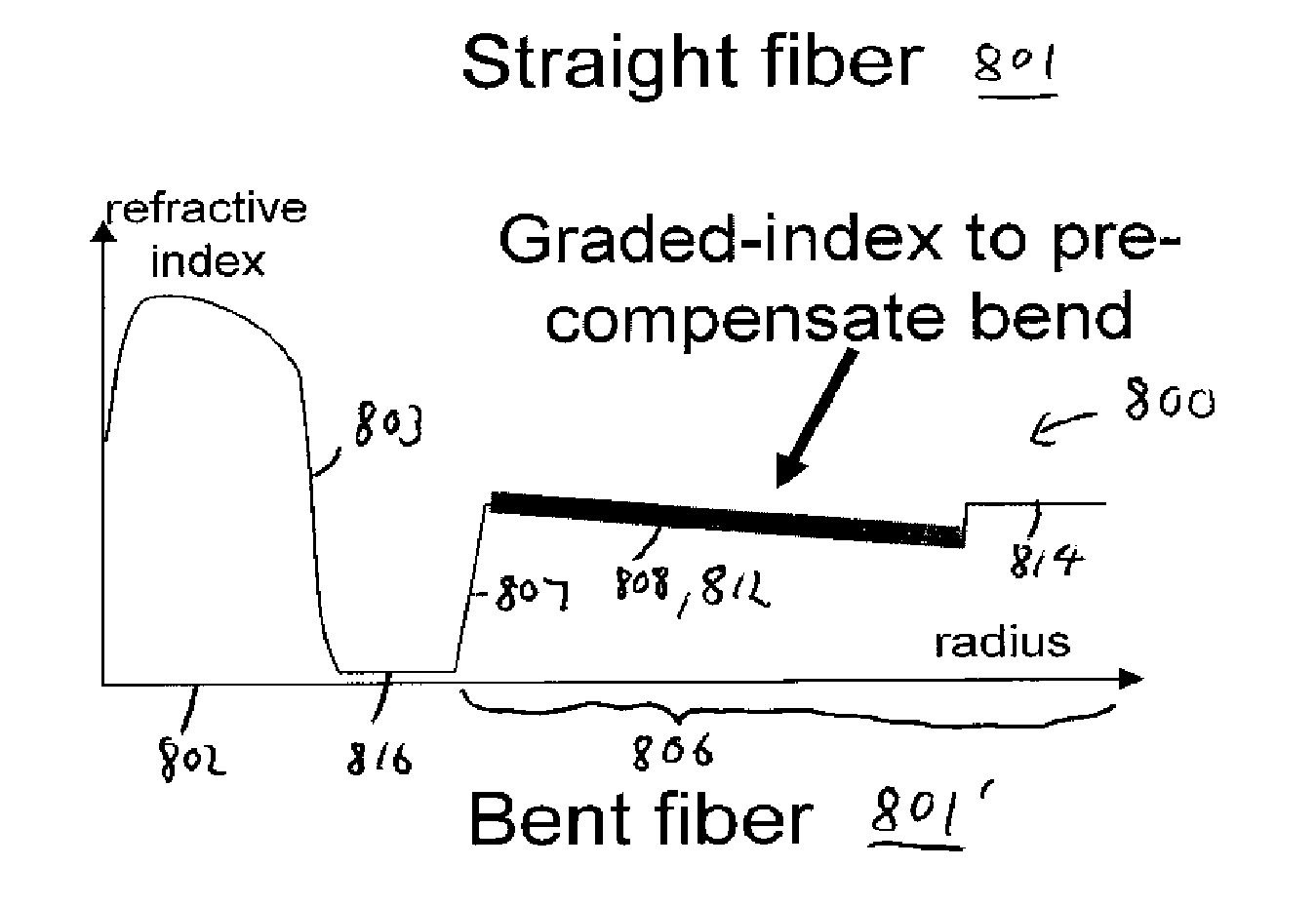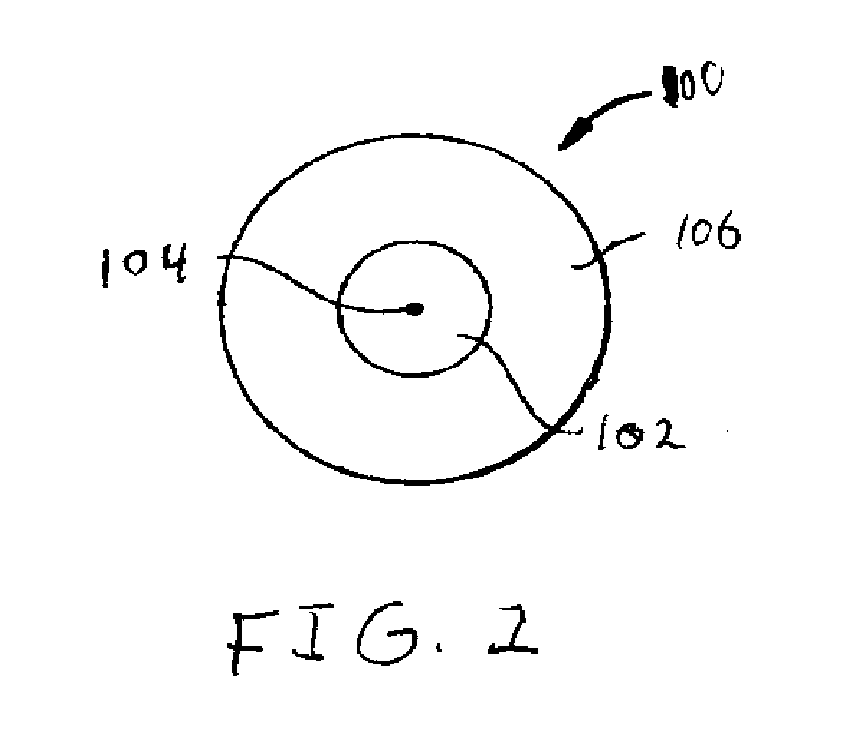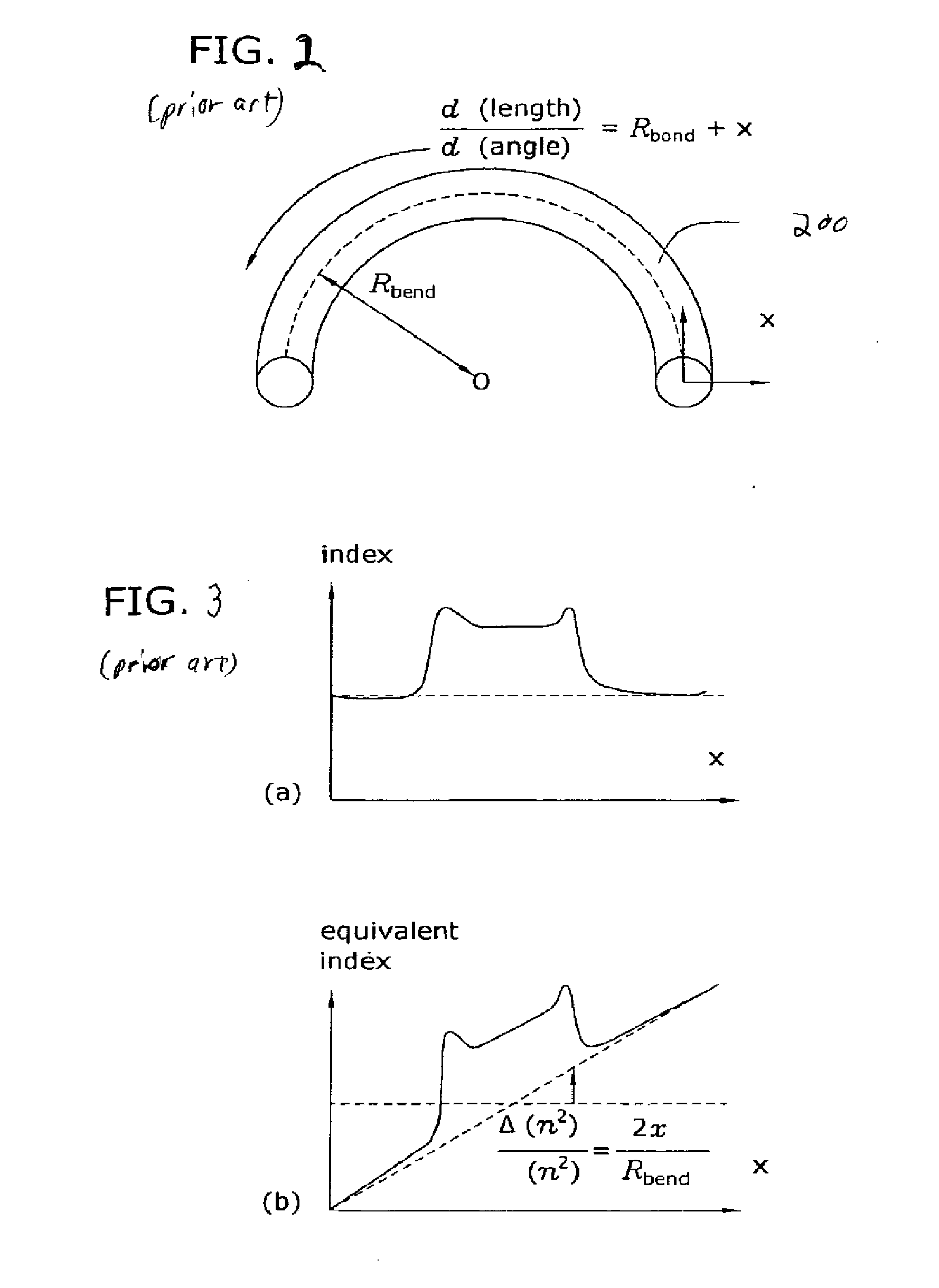Bend Compensated Filter Fiber
a filter fiber and offset technology, applied in the field of optical fibers, can solve the problems of limiting power and efficiency, limiting the degree of filtering, so as to achieve no loss and high loss
- Summary
- Abstract
- Description
- Claims
- Application Information
AI Technical Summary
Benefits of technology
Problems solved by technology
Method used
Image
Examples
Embodiment Construction
[0039]FIG. 1 is a schematic diagram of a core region of a large mode area filter fiber 100, according to an embodiment of the present invention. The filter fiber 100 may include a core region 102 having a longitudinal axis 104 and a cladding region 106 surrounding the core region. The core region 102 and cladding region 106 may be configured to support and guide the propagation of signal light in the core region 102 in the direction of the axis 104. To this end, the refractive index of the core region 102 (ncore=nc) is greater than that of the cladding region 106 (nclad). Preferably the core region 102 and the cladding region 106 are configured to propagate signal light preferentially in a fundamental transverse mode at the center wavelength of the signal light.
[0040]The term center wavelength of the signal light is intended to recognize the well-known phenomenon of line broadening; that is, no signal source emits light at precisely a single wavelength. Rather, all light sources emi...
PUM
 Login to View More
Login to View More Abstract
Description
Claims
Application Information
 Login to View More
Login to View More - R&D
- Intellectual Property
- Life Sciences
- Materials
- Tech Scout
- Unparalleled Data Quality
- Higher Quality Content
- 60% Fewer Hallucinations
Browse by: Latest US Patents, China's latest patents, Technical Efficacy Thesaurus, Application Domain, Technology Topic, Popular Technical Reports.
© 2025 PatSnap. All rights reserved.Legal|Privacy policy|Modern Slavery Act Transparency Statement|Sitemap|About US| Contact US: help@patsnap.com



